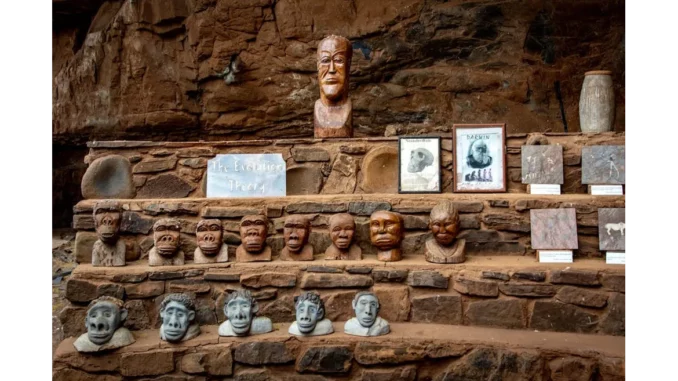
In today’s world, characterised by remarkable advancements in technology and medicine, a thought-provoking question arises: has the course of human evolution come to a halt? The ability to manipulate our environment, extend life expectancies, and cure diseases might suggest a reduction in the natural forces that historically drove human evolution. However, the reality is considerably more nuanced than a straightforward affirmation or denial.
To comprehend the current state of human evolution, it is essential to consider its historical context. Traditionally, human evolution was governed by natural selection, a process favouring genetic variations that enhanced survival and reproduction within specific environments. For example, the sickle cell trait in sub-Saharan Africa confers resistance to malaria, while certain genetic mutations in Asia and Africa offer protection against leprosy. Additionally, populations residing on the Tibetan Plateau have adapted to high altitudes with elevated haemoglobin levels. These adaptations exemplify how human genetics historically responded to environmental pressures such as disease and climate.
In the modern era, the landscape of human evolution has been significantly altered by technological and medical advancements. Renowned naturalist Sir David Attenborough has voiced concerns that contemporary medicine, by ensuring the survival of individuals with genetic disorders, might be impeding natural selection. Indeed, the environmental pressures that once threatened human survival have diminished, suggesting that evolution may now play a less prominent role. Nevertheless, this does not imply that evolution has ceased. Rather, it has transitioned from being predominantly driven by survival in nature to being influenced by social, cultural, and technological factors. These novel drivers impact mating choices, health, and behaviour, thereby prompting genetic changes.
Cultural evolution has emerged as a noteworthy factor in human development. In the Netherlands, for instance, taller men are often perceived as more desirable in social and mating contexts, resulting in a trend where taller individuals achieve greater reproductive success. Such cultural preferences influence which traits are inherited by future generations. Furthermore, globalised diets are affecting the evolution of traits related to nutrition and metabolism. This cultural shift underscores the evolving nature of human evolution, propelled not just by environmental factors but also by societal norms and preferences.
Despite the strides made in medicine, diseases continue to exert influence over human evolution. The CCR5-Δ32 mutation, which provides resistance to HIV, and the sickle cell trait, offering protection against malaria, serve as examples of ongoing genetic changes driven by disease. These adaptations illustrate that disease remains a selective force, prompting evolutionary shifts in response to health threats. Consequently, while traditional evolutionary pressures may have diminished, the role of diseases in shaping human genetics persists.
Looking to the future, a multitude of factors continue to mould the trajectory of our species. Climate change, space exploration, and biotechnology present novel challenges and opportunities for human evolution. As the planet warms, populations may evolve to better cope with rising temperatures. Efforts to inhabit space could lead to adaptations for microgravity and increased radiation exposure. Moreover, advances in gene editing and biotechnology hold the potential for humans to actively shape their evolution, enhancing physical, cognitive, or health-related traits.
Thus, human evolution has not halted; rather, it is evolving in response to new challenges and opportunities. While it may not mirror the survival-driven evolution of the past, it continues to be influenced by natural forces and human ingenuity. As we navigate the complexities of modern life, evolution remains a constant presence, subtly shaping the future of our species. The interplay between traditional evolutionary mechanisms and contemporary influences ensures that human evolution will remain a dynamic process, adapting to meet both the predictable and unforeseen demands of our changing world.


Be the first to comment